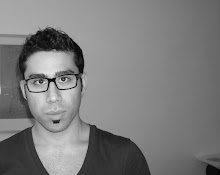Thesis Meeting 12.06.2007
Trying to understand the essence of what makes an experience.
The poetry within the everyday.
Slow time. Make a place for contemplation.
The difference between aggressive observation and relaxed observation
Joseph Piper “Ideas of contemplation”
The idea that a relaxed observation looks to your intuition.; relates to memory and past experiences.
Allow you to see it for what it is.
related to the concept of leisure
Not leisure like a vacation
Joseph Piper “Leisure + the making of culture”
Retreat > reflection > rejuvenation
Relates to the Sacred.
Getting in touch with your sapient knowledge: a kind of knowledge understood as being from experience. Similar to our concept of wisdom.
A place to put one in touch with their sapient knowledge. i.e. to reflect on their lives and their experiences.
Becoming in touch with your senses.
A therapeutic architecture.
I want to critique the visual culture by bringing out feelings we’re not in touch with because I believe it’s important for the health of the individual.
“For the art of living well” “the art of thinking well”
- M. Frascari
Martin Heidegger “Building, Dwelling, thinking”
To have a good life there needs to be a time for thinking.
That is what I am building.















